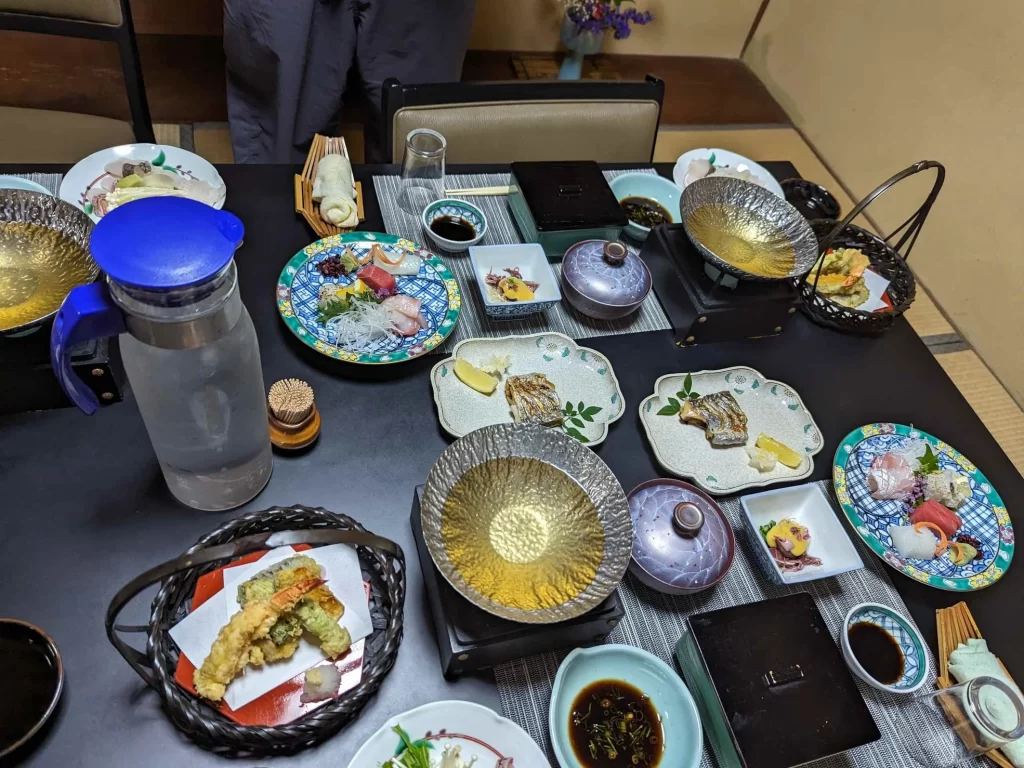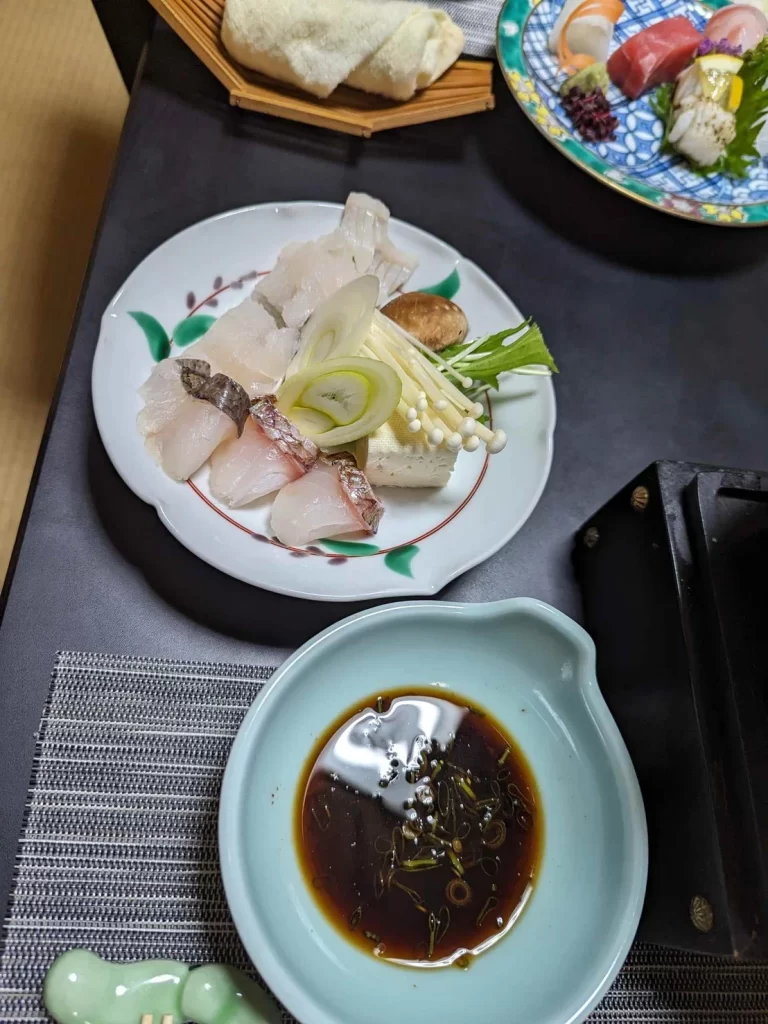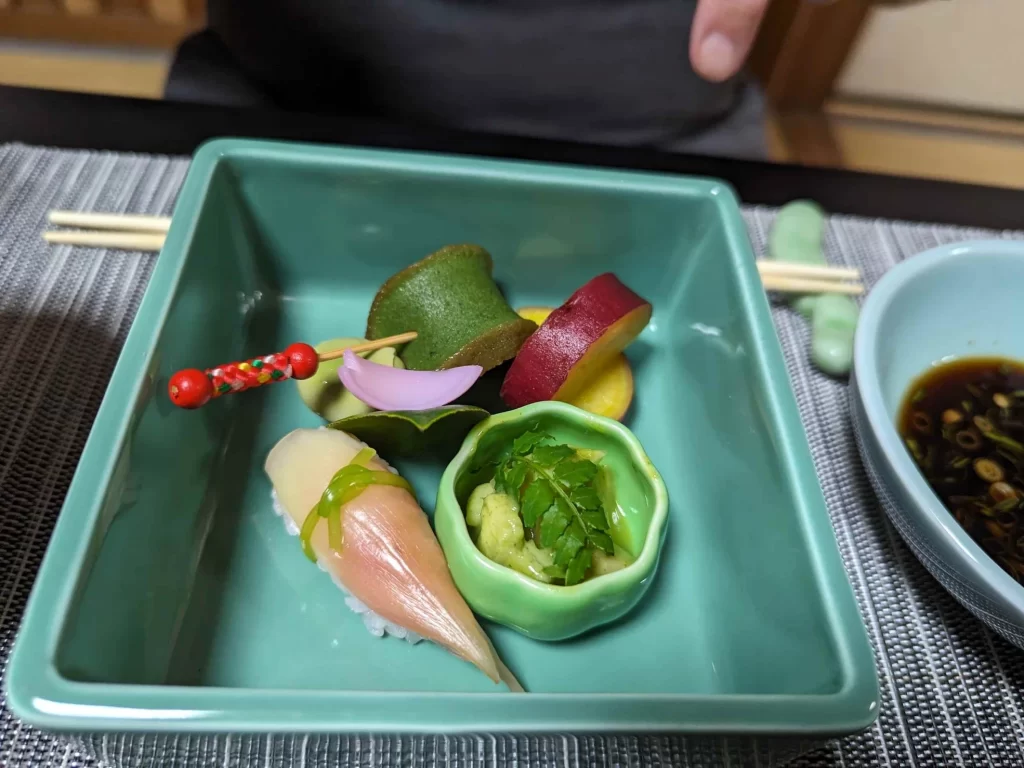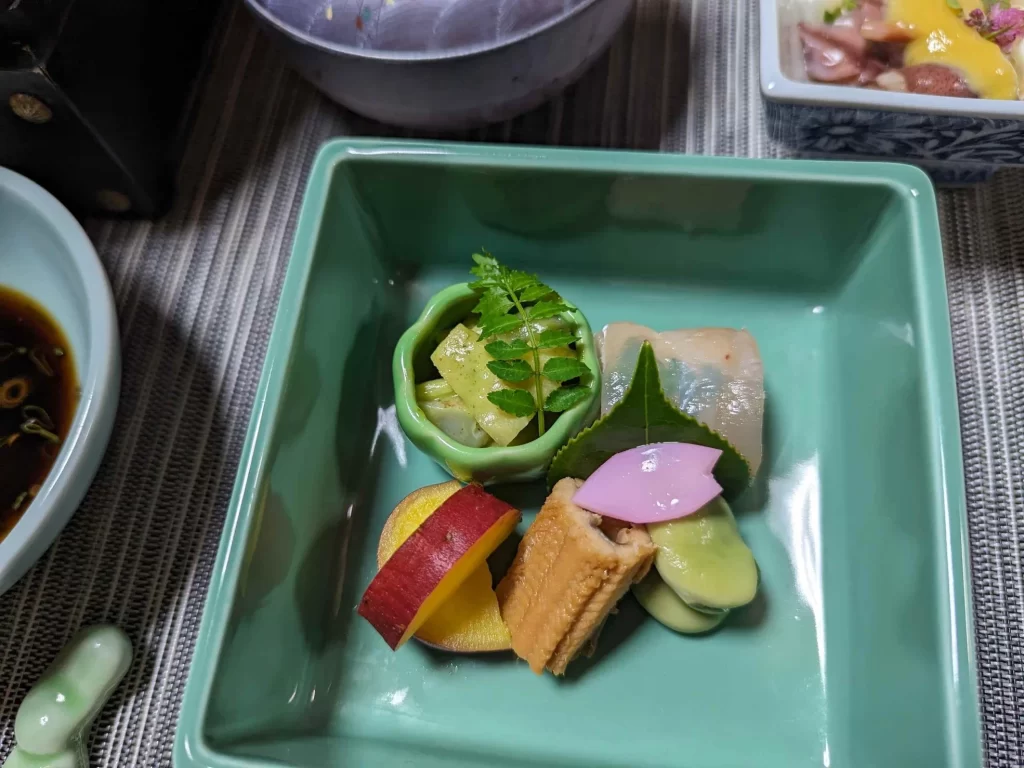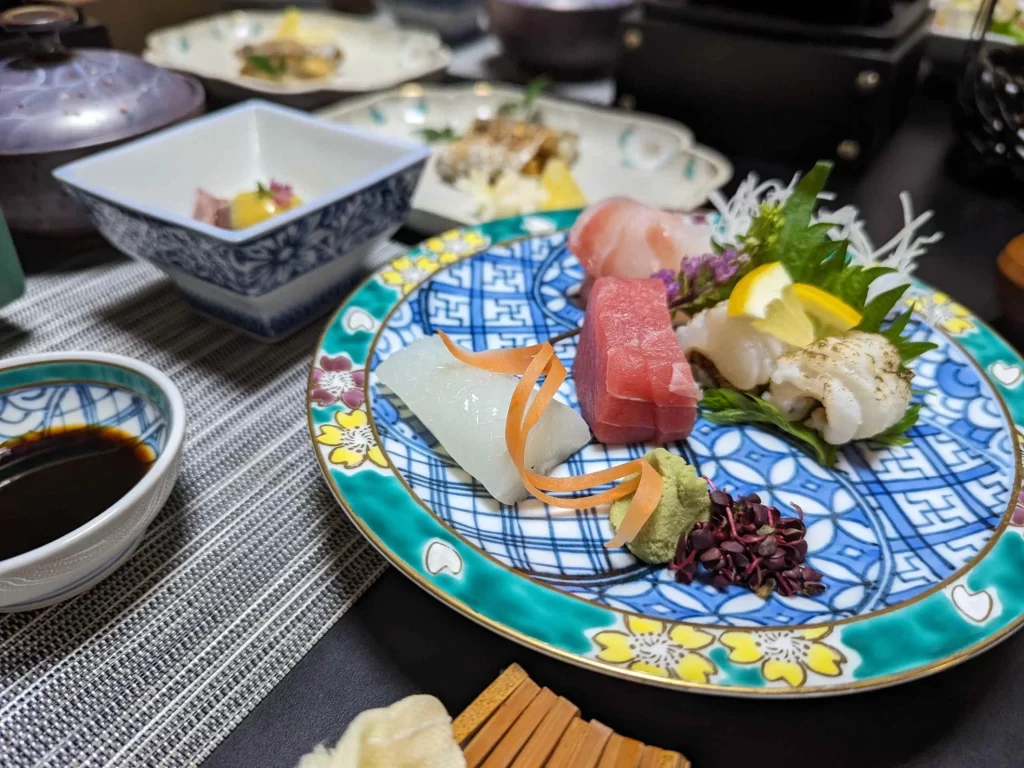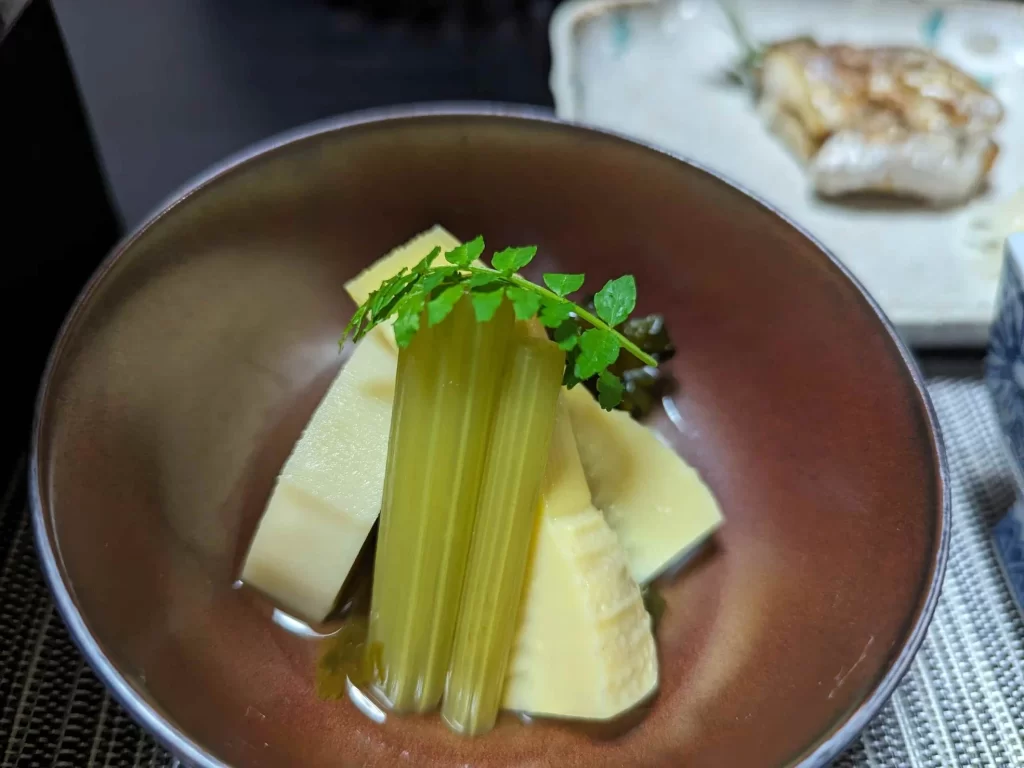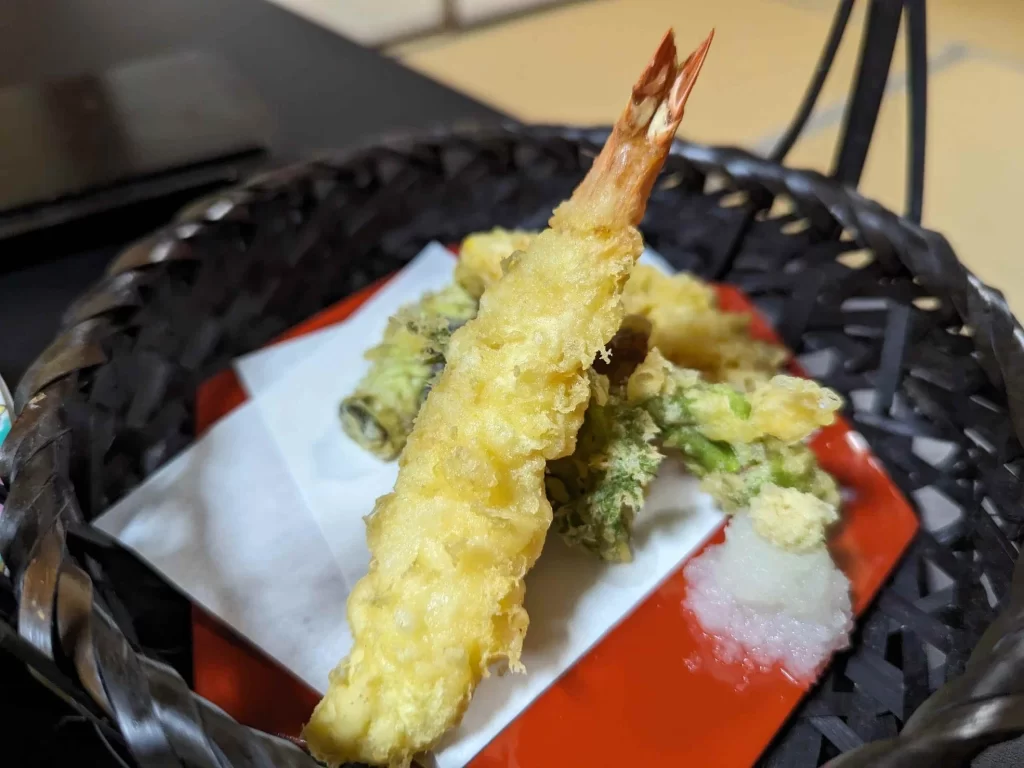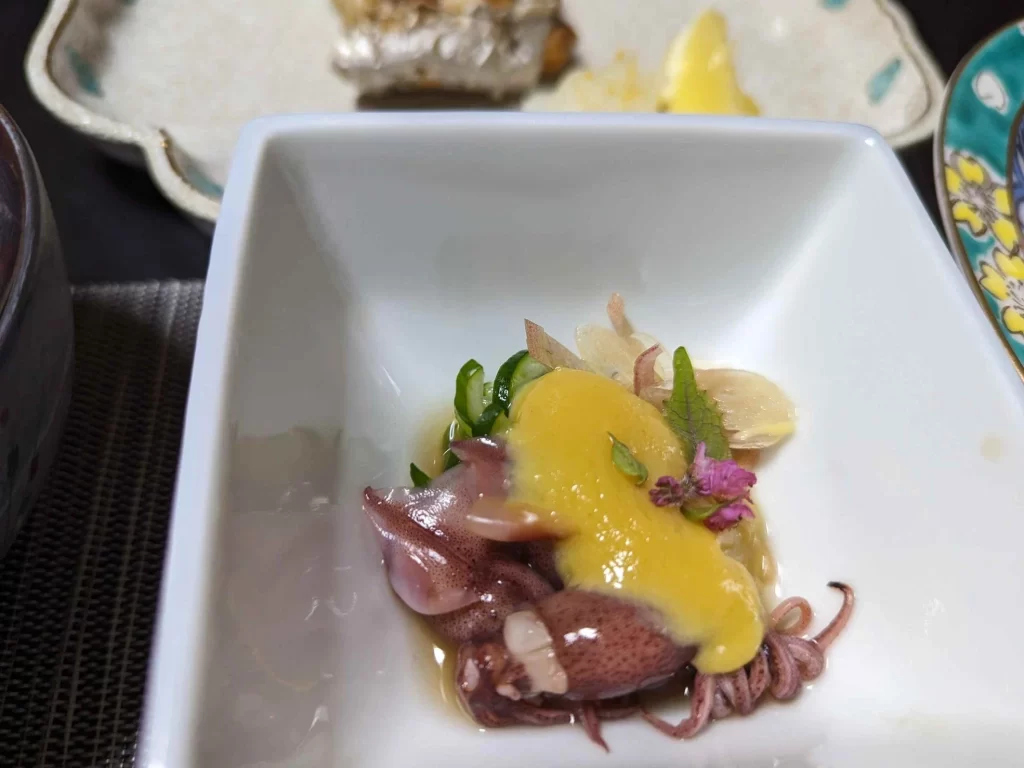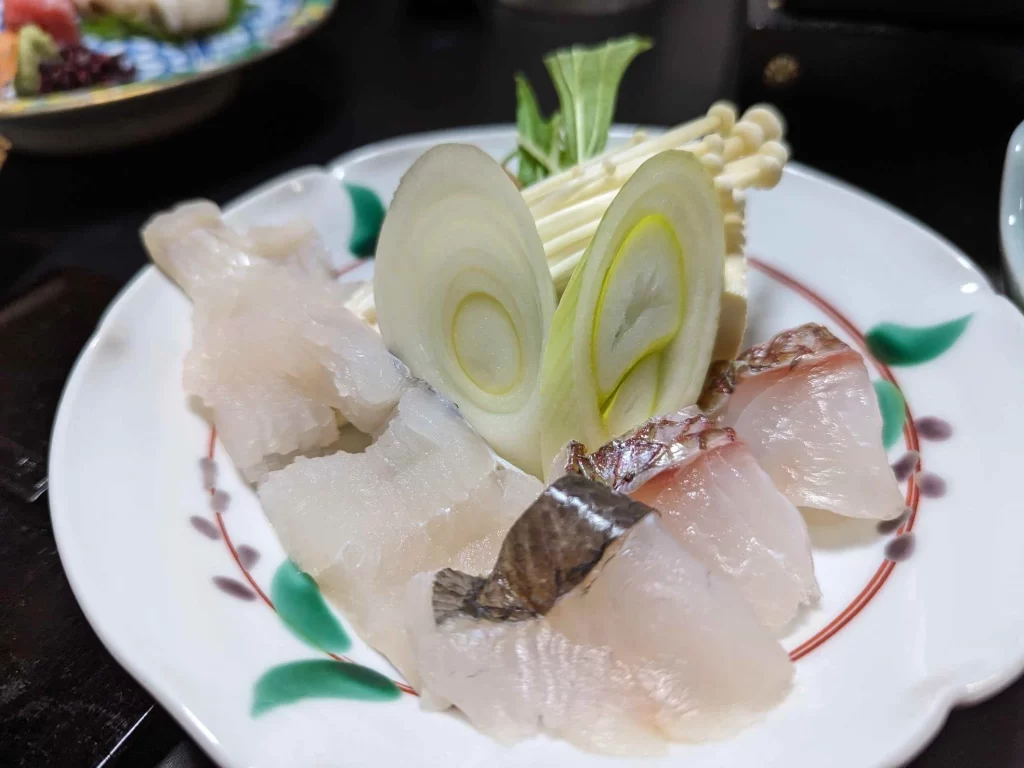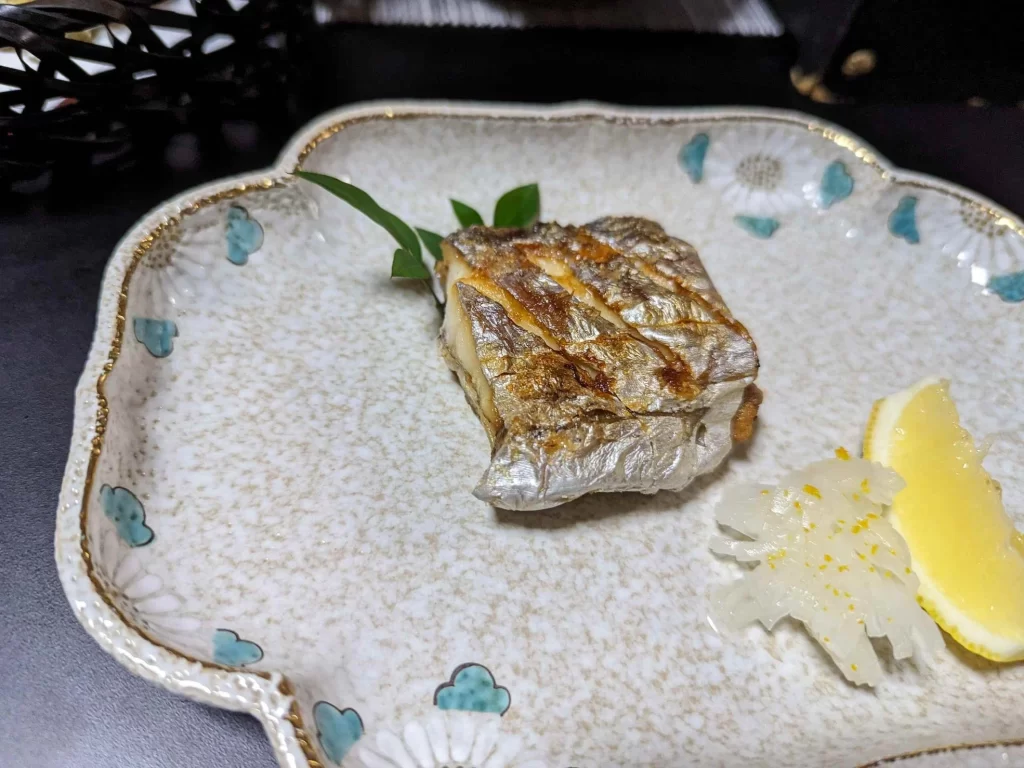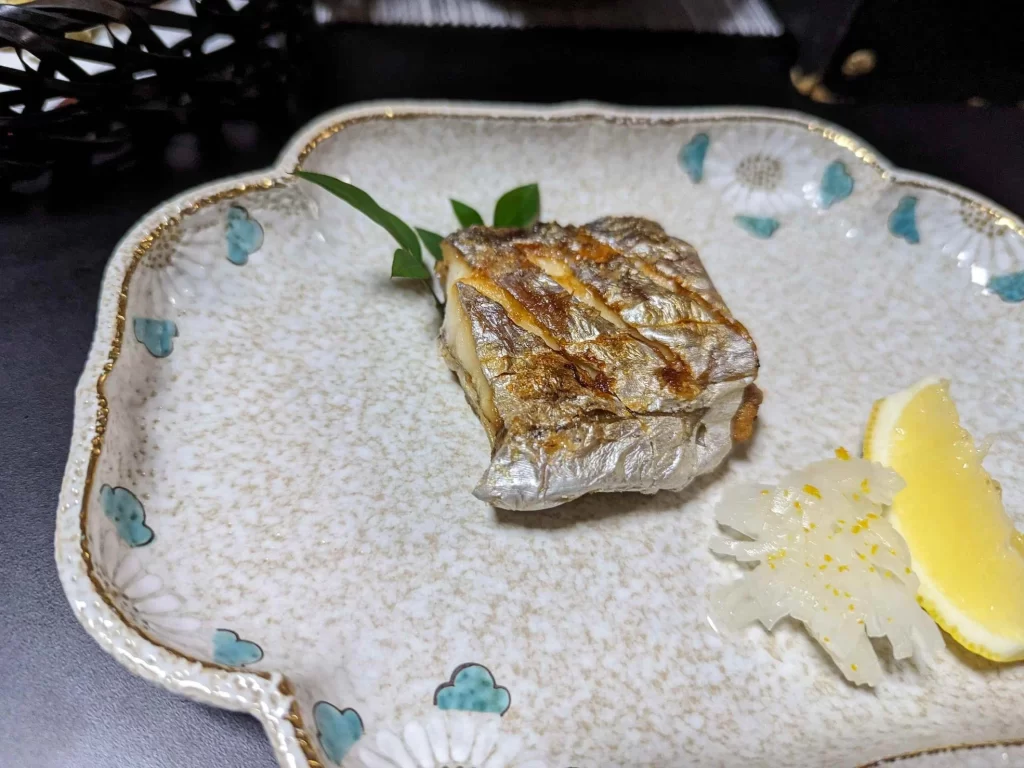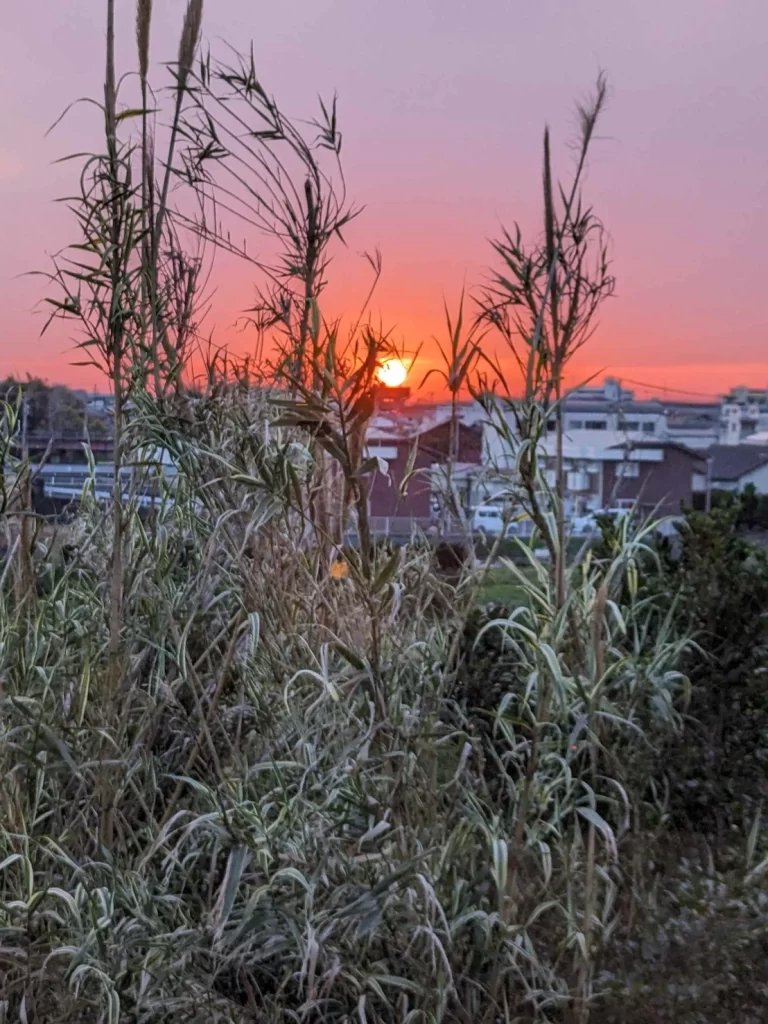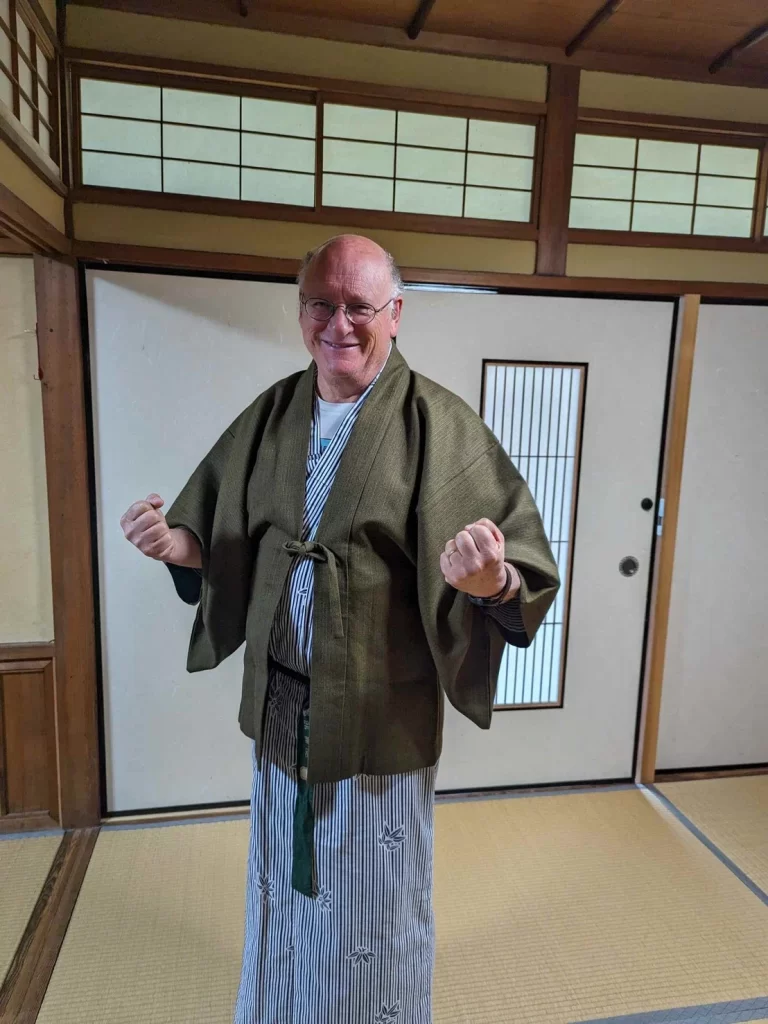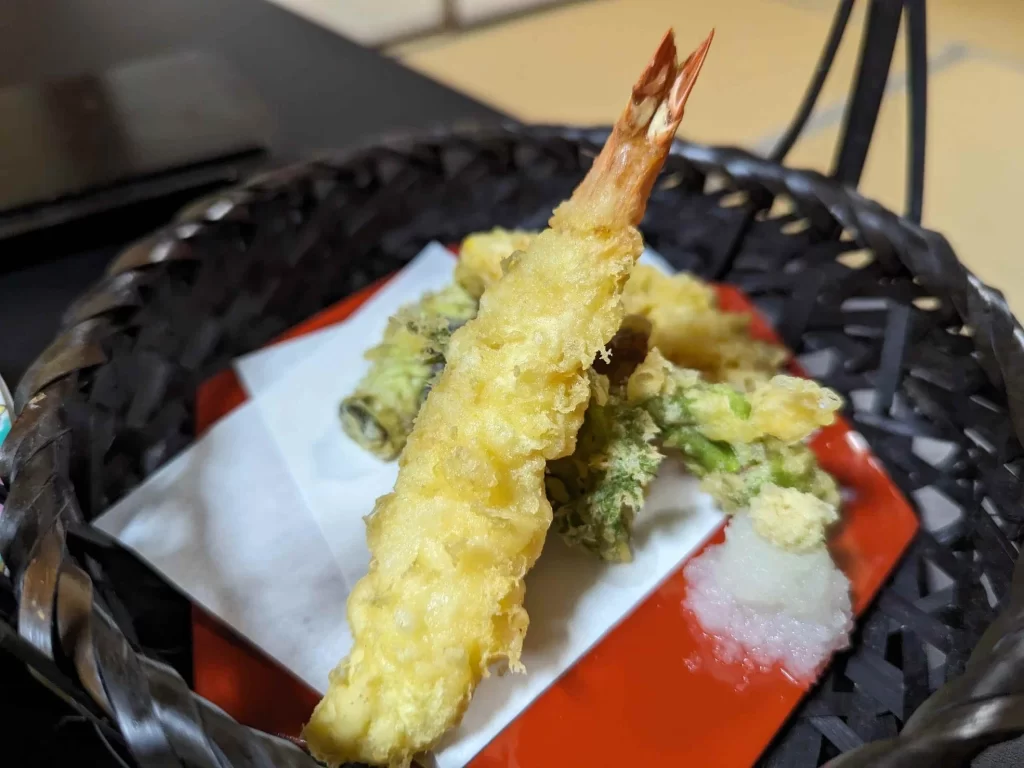Starting the Kumano Kodo
With all due respect to Osaka, the real reason we were in Japan was the Kumano Kodo walking trail. And now we were about to start.
Like excited little kids on a school excursion, we took one train, then another and then another until we finally arrived to Shimizu-Ura. There is nothing special about it. It’s just a little town. But unfortunately we saw more of it than we were meant to. In the 20 years or so that we have been walking together, there has almost never been a walk that we haven’t gotten lost on. Often, though not exclusively, at the beginning. And to commemorate this fact, we took a right hand turn out of the station, instead of a left and after about a kilometre it became obvious that the description in the itinerary that we had received from the tour company didn’t match our surroundings. This unscheduled detour did give us our first views of the beautifully tended gardens and exquisitely manicured fir trees that fronted even the most humble of houses. The Japanese aesthetic is so different to what we were used to. Simon, for his part, has a large front garden in Melbourne and a gardener, Morrey, who once a fortnight looks after it. Morrey almost became the fifth member of our group, at least in absentia. Every time, which was often, we saw an impressive garden or uniquely shaped tree, we would remind Simon that he needed to send Morrey to Japan in order to learn how to more aesthetically look after his garden.
Enchanting gardens in random villages or not, we still needed to find the correct path in order to actually start the Kumano Kudo, so we backtracked, read and understood the instructions as they were written and soon found ourselves at the foot of a gentle incline (according to the instructions). If a 300 metre ascent over one kilometre (a 30% incline) is adjudged a gentle incline, then we were going to be in big trouble for the next 6 days. But first we had to negotiate this. I had gone through a rough few months previous to this trip, first tearing my calf muscle and then battling the worst flu of my life for a month. I was fully healthy now (at least that), but hopelessly unfit, not having trained for over two months. You’ve heard the expression crash fit? Now was the crash part. By the time we’d reached the Jizobu-ji temple at the peak, having puffed and panted through a lovely forest, we were pooped. The day’s route allowed, even recommended, a side trip to the Kitsumoto Shrine, regarded as one of the most significant in the area, with a 130 year old mikan orange tree, which sprouted from the original tree that was brought to Japan in the 17th century by the guy who set up this shrine. The mikan orange is somewhere between an orange and a tangerine and is the most common citrus fruit in Japan. There entire region has many mikan orange groves, so this shrine and the old tree is like the grand father of Japanese citrus.
In any case, getting from the Jizobo-ji temple to the Kitsumoto Shrine entailed descending along a road for three km and then returning uphill those same three km to where we presently were. I had already decided that given my state of poopedness, fitness, and 3 hard days of walking ahead of us, I wasn’t going to add another six km of hard walking. The other three decided that they were up for it. So off they trotted, while I sat on the stairs of the shrine waiting for them. I figured that it would be at least two hours before I saw any trace of them and was perfectly happy with the arrangement. After a stroll around this small village, including finding a very nice koi fish pond farm, I nodded off, enjoying the quiet and the rest. Unexpectedly, an open ute pulled up, full of mandarin trees, spades, shovels and three old Australians. The three old Australians jumped out, happy and proud of themselves that they’d stopped some local mandarin farmers and begged them to take them up the hill back to the shrine where a snoozing friend was waiting for them. Apparently the climb back up was steeper than the hill we had ascended from Shimizu-Ura, albeit on a road and not a mountain track. So after grateful farewells and Garry presenting them with a clamp (he is a clamp manufacturer) as a gift, we set off down towards Keinan. And what a route. We quickly found ourselves walking through a black bamboo forest. The forest was eerily beautiful. Each bamboo plant was about 30 metres tall, with leaves only at the top. These long black poles ensured that the forest was quite dark, or at least, spooky, but also very beautiful. As we descended down the mountain path, the bamboo forest gave way to just a normal beech, pine, oak and spruce forest. Maybe not as special as the black bamboo forest but definitely enchanting. So far, our first day of walking had not disappointed.
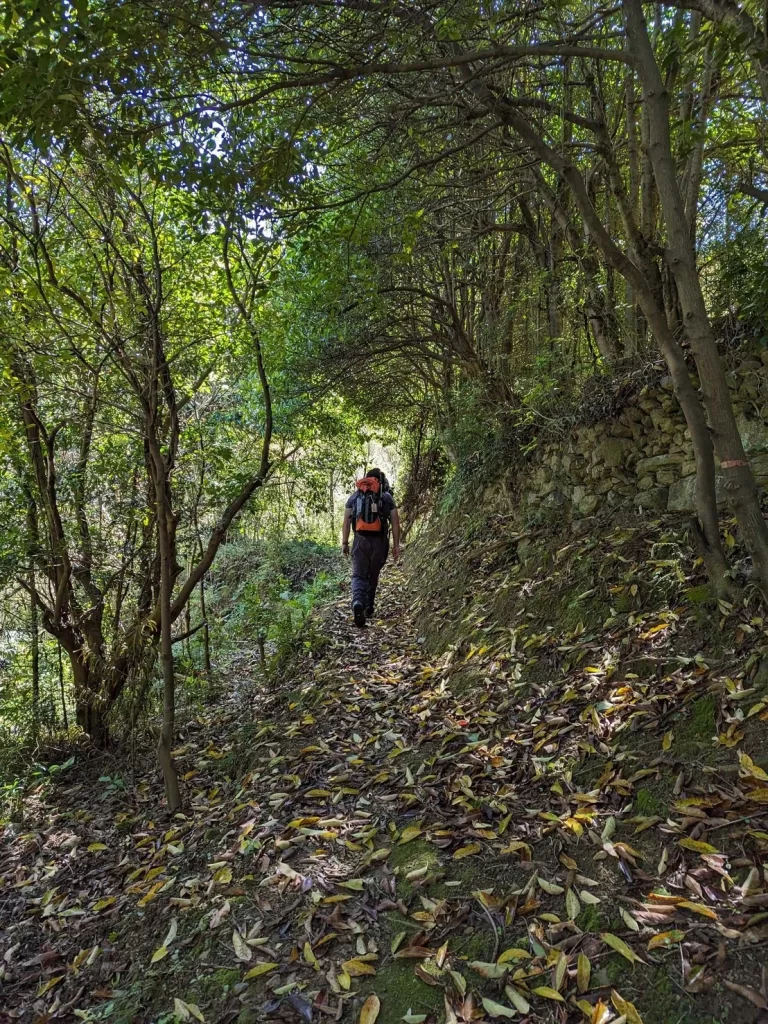
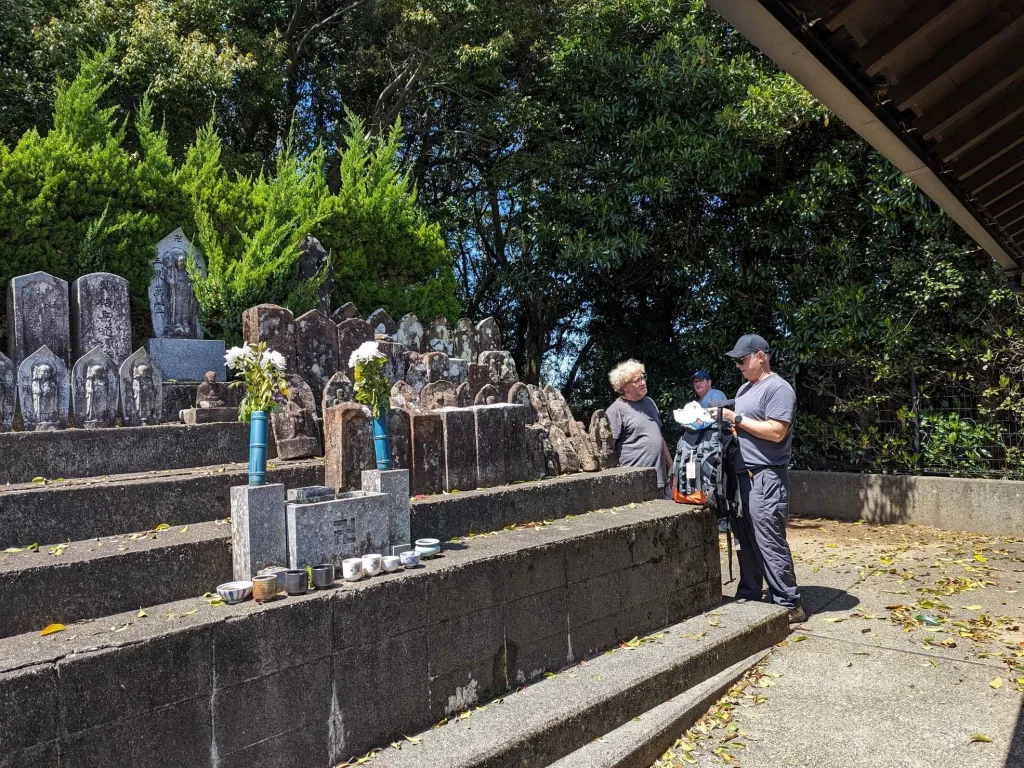
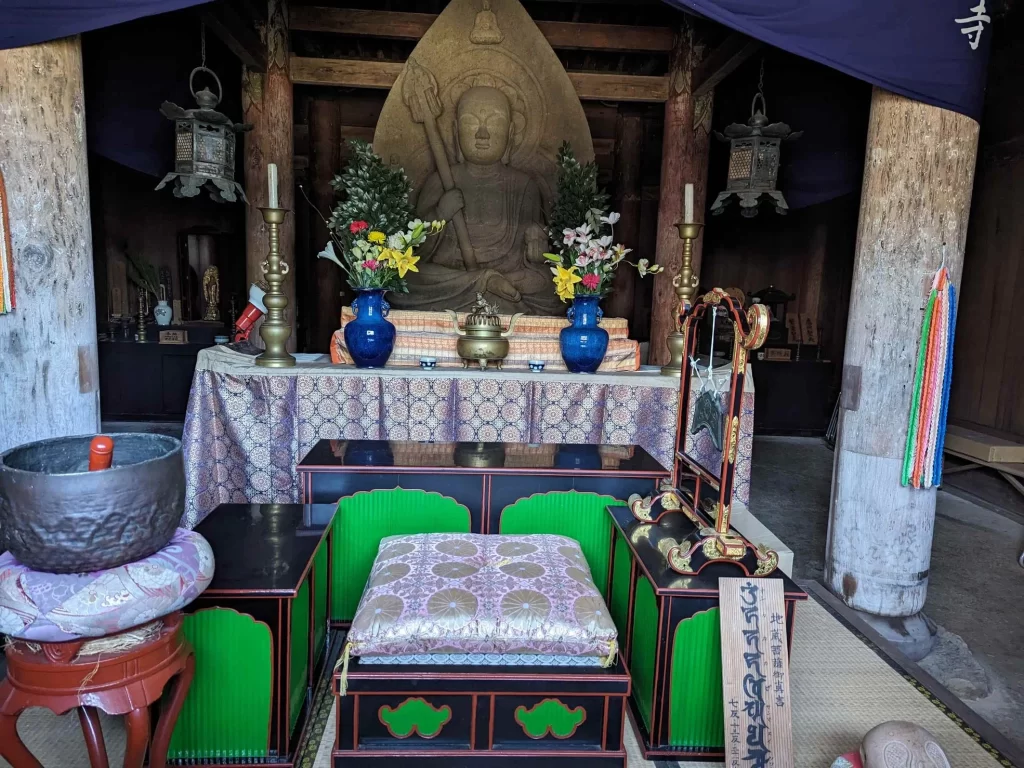
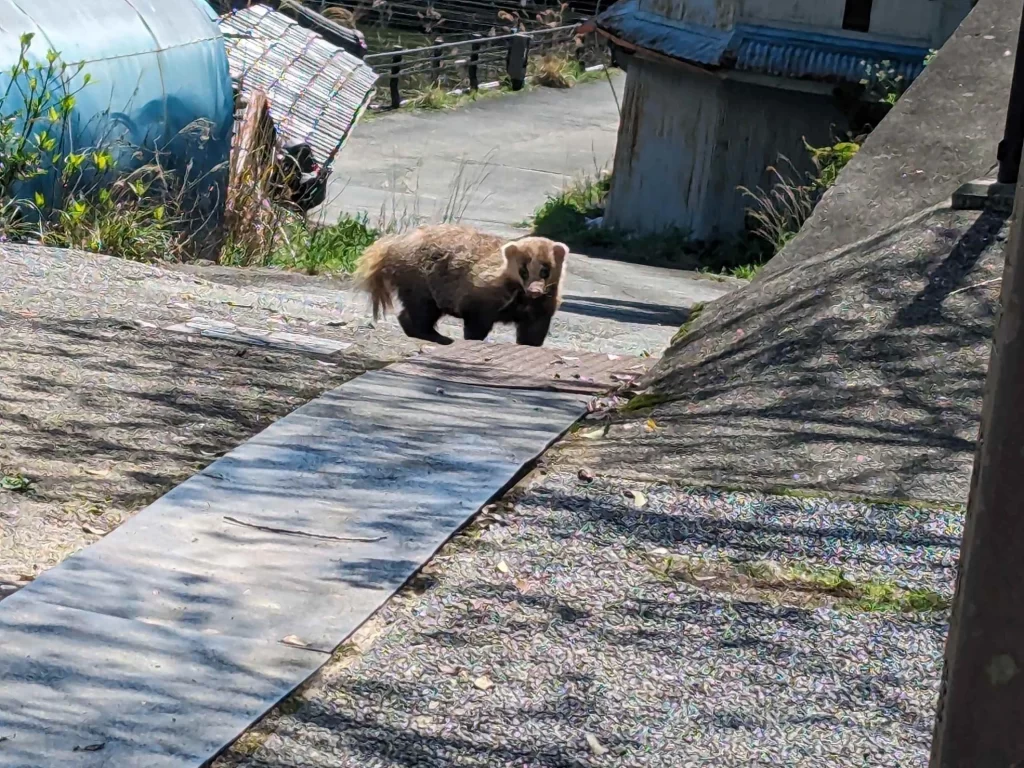
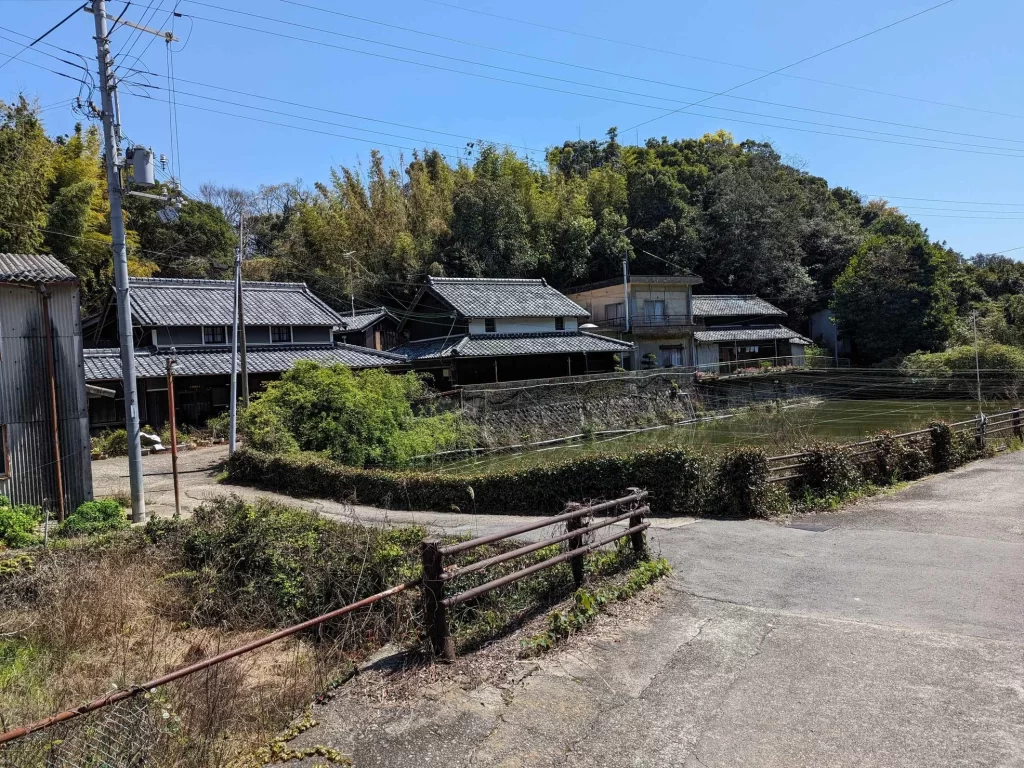
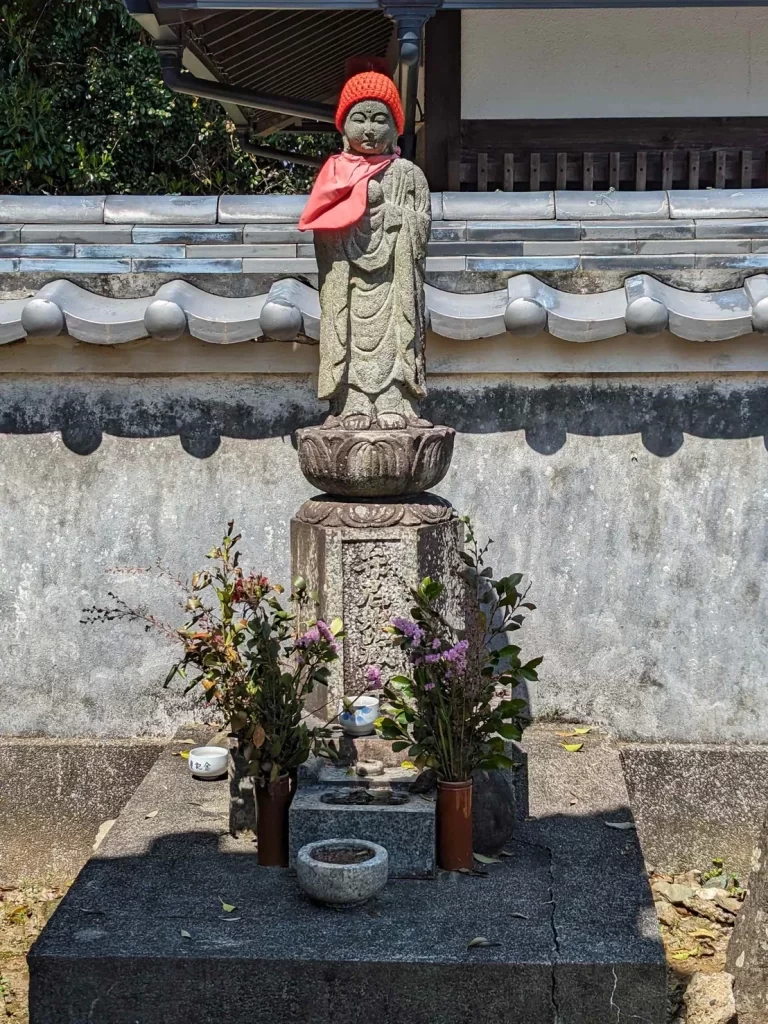
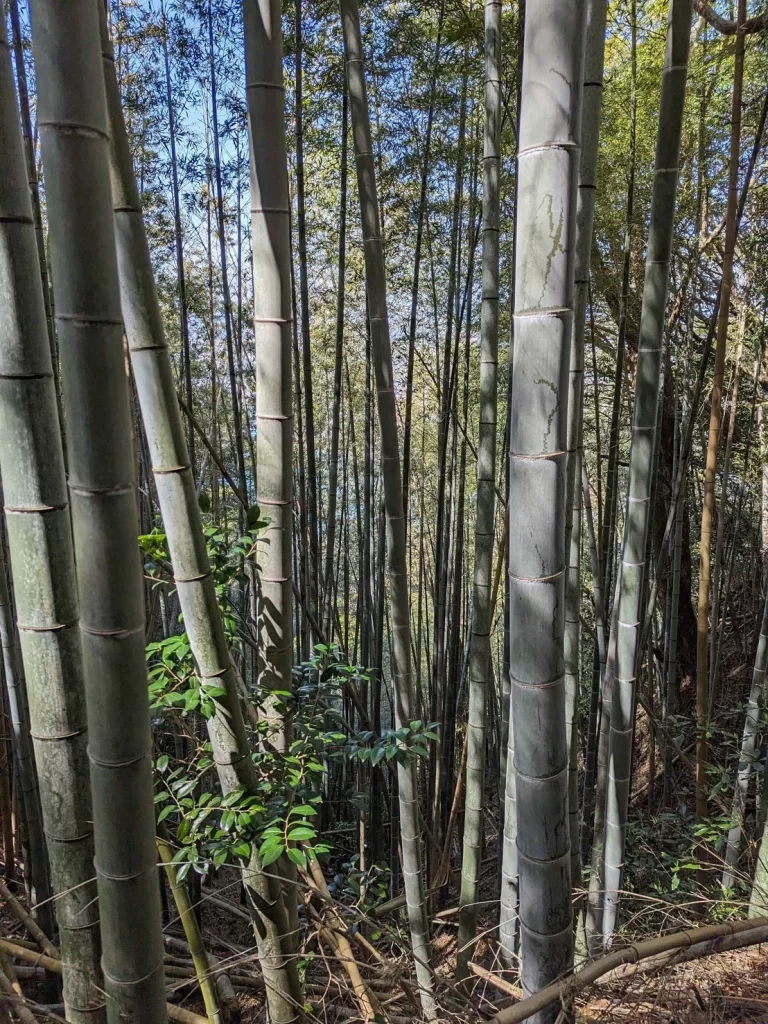
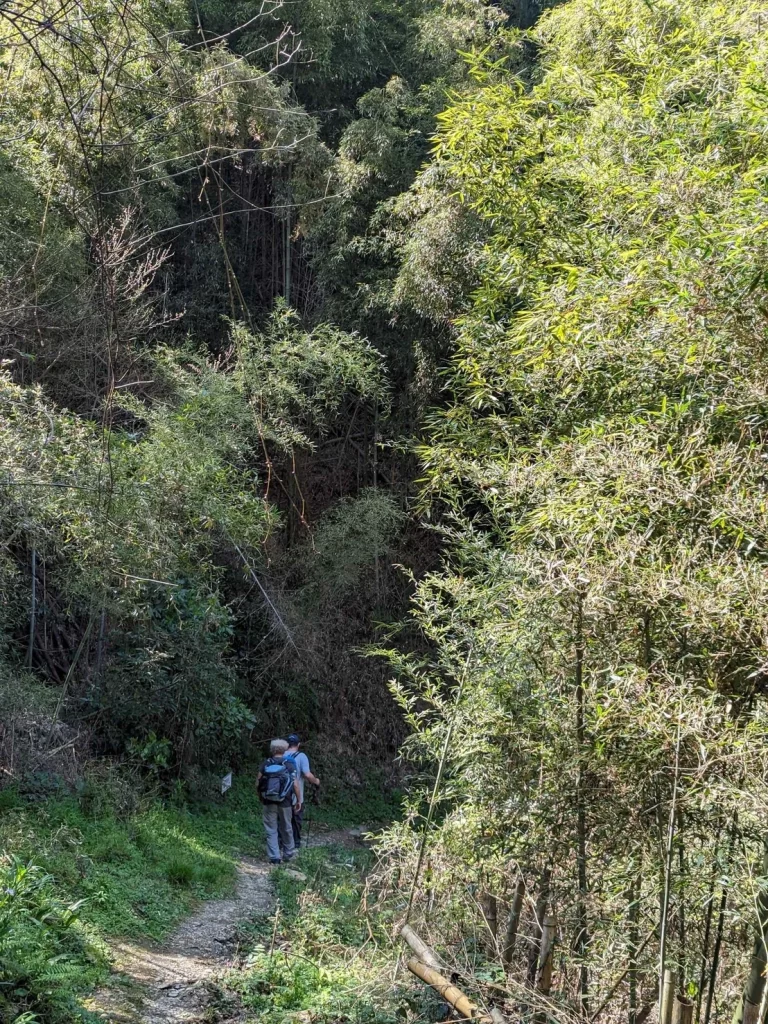
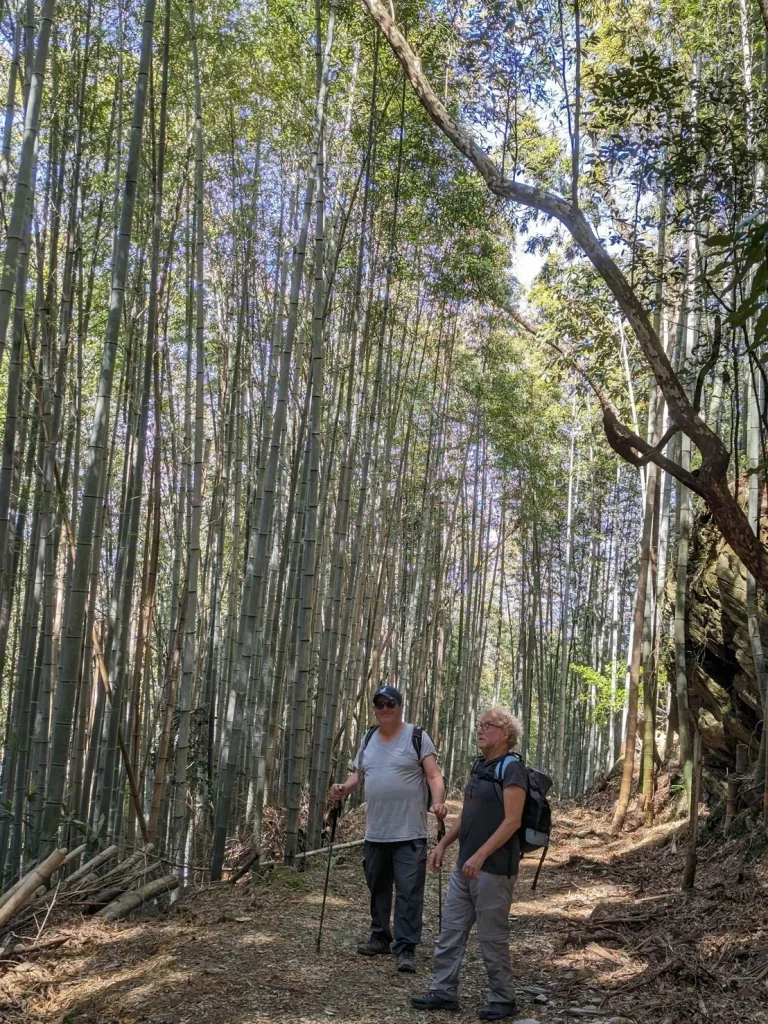


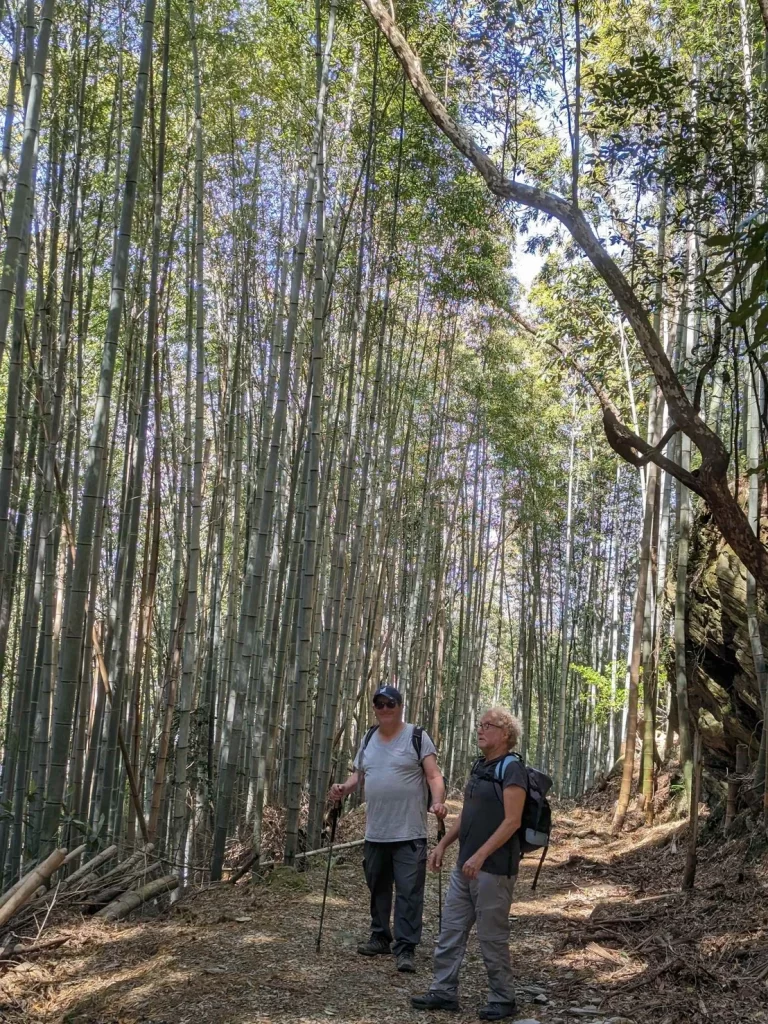
Keinan
As the forest thinned we arrived to the outskirts of the town of Keinan. We were looking for signs that would point us to the Fujishiro temple, where we would be met by Mariko, the 2nd in charge of the temple, who would explain the importance and meaning of the Buddha statues. We were starting to fear that perhaps once again we had gone astray, when we almost walked past a sign, hung on a wire fence, saying “Welcome Yoni Glickman to the Fujishiro Shrine” with a big red arrow pointing to a Tori gate not 20 metres to our right. This large Tori gate is thought to be the first true entrance to the Kumano Kodo trail. Not only was Mariko waiting there for us, she had a companion, who it appeared had wandered in off the street when they’d shoved a plastic folder into his hands, expecting him to read to us about the different aspects of the shrine, in severely broken English. It was very obvious that all he knew about the shrine was what he was reading from the laminated sheets. But he was good natured and was trying hard. Marika explained to us about the three Buddhist statues and the holy, thousand year old camphor tree, we sat and watched a video in English and truly felt that this was as important a part of the Kumano Kodo trail as the beautiful forests we had been hiking through these past few hours.
We were then chaperoned next door, where we visited the Suzuki family house. Suzuki is the second most common family name in Japan and it all started in Keinan in the 12th century when priests from the small Suzuki family, who tended the Kumano temples, spread the Kumano worship throughout Japan. The house is a life size model of Japanese architecture and is the centre for the entire Suzuki family in Japan. To be honest, I would have been just as happy to skip it, as it was getting late and we wanted to see Yuasa, our final stop for the day and the birthplace of Japanese soy sauce. My three other travel companions, together with the guy they dragged in off the street and Mariko, the number 2 honcho at the Fujishiro Shrine were all very enthusiastic, so who am I to argue?
Just before leaving the Suzuki mansion we were granted a gift. An origami puzzle that by folding a flap in a certain way turned into something hilarious. The workers at the mansion, the person who gave us the origami folding, the guide who knew nothing except what was on the sheet and Mariko all broke into peels of laughter, as if it was the funniest thing they had ever seen. The four dumb whiteys stood dazed and confused, failing to see any humour in unfolding an origami model. I guess we missed the cultural context.
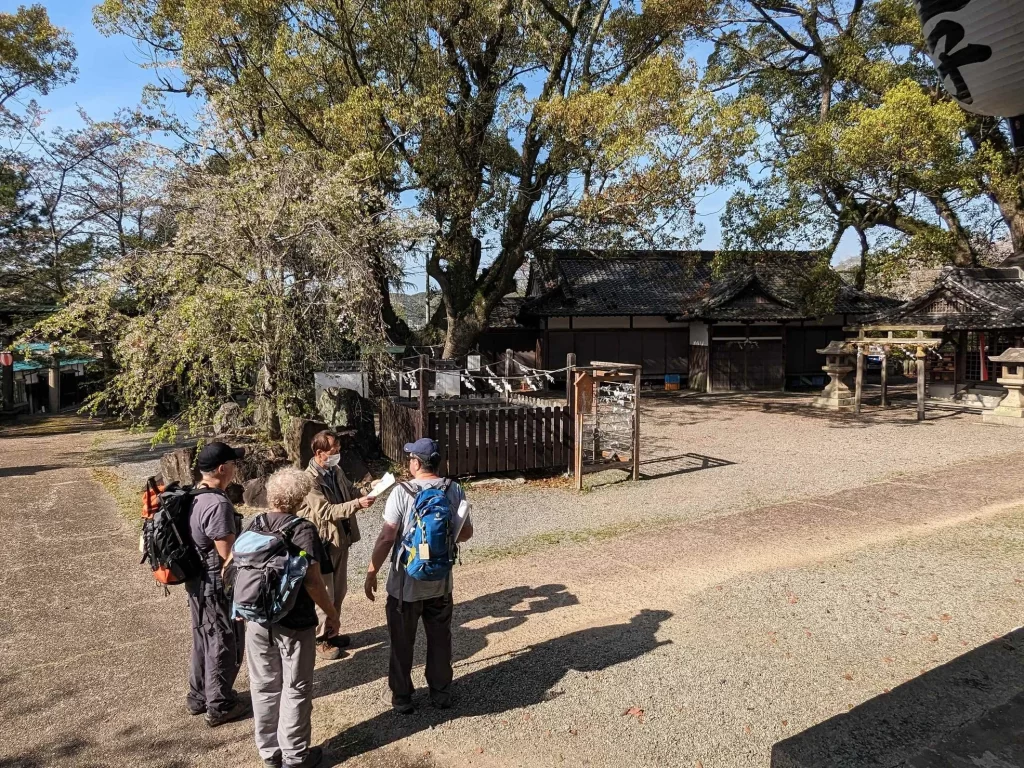
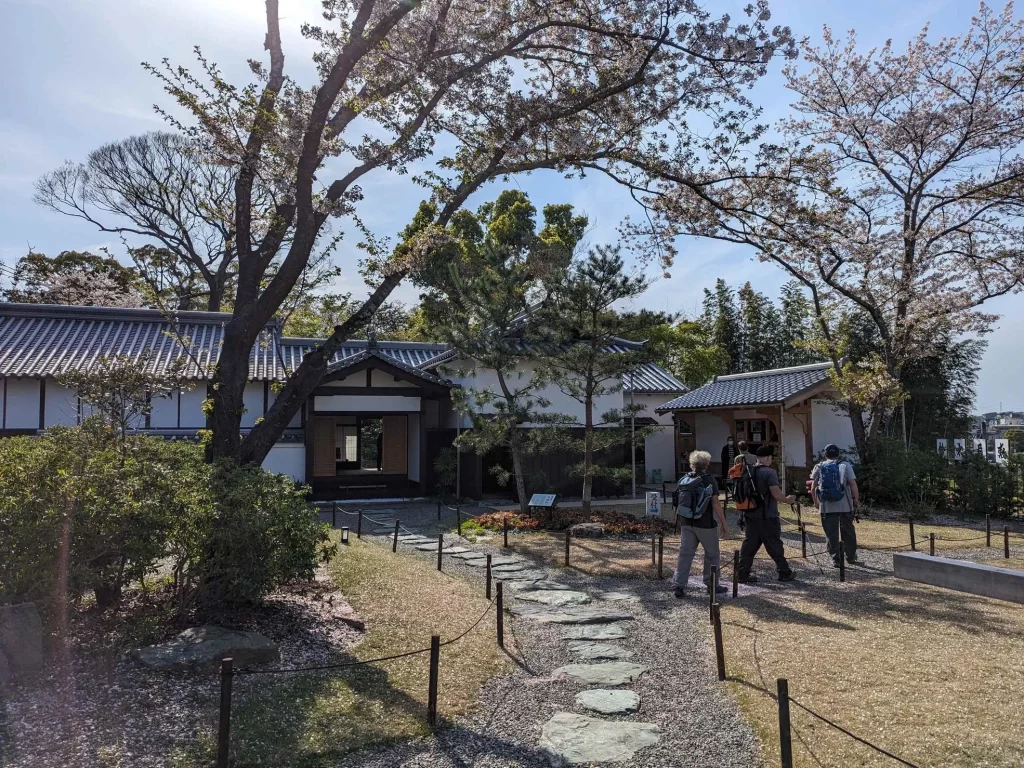
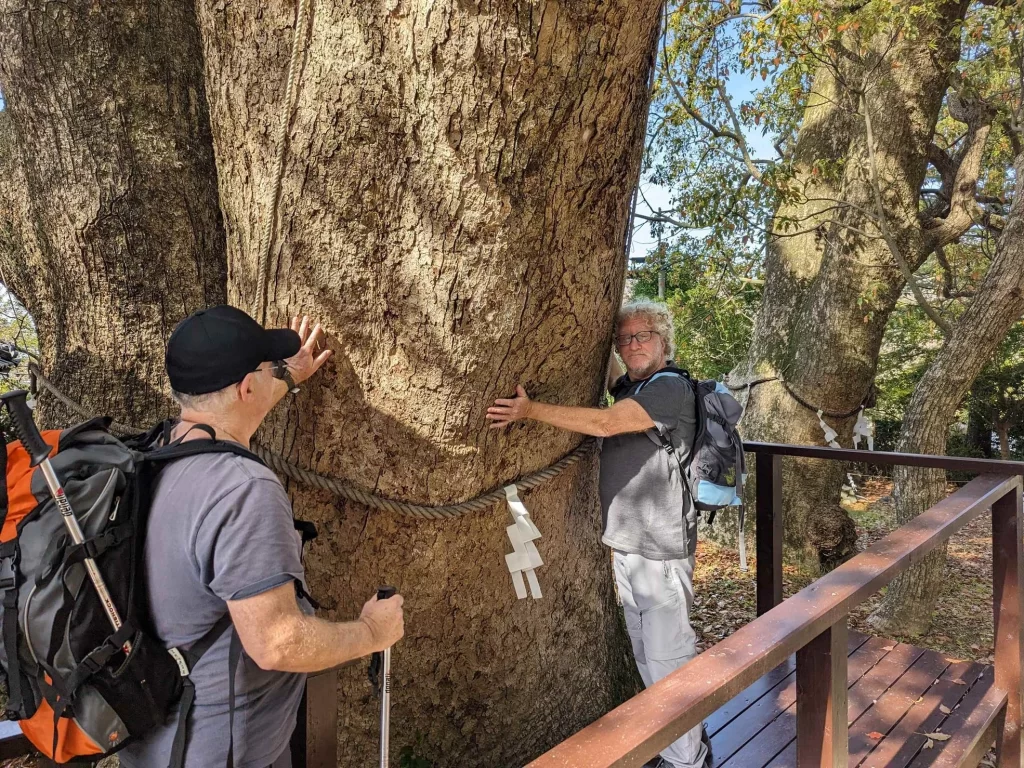
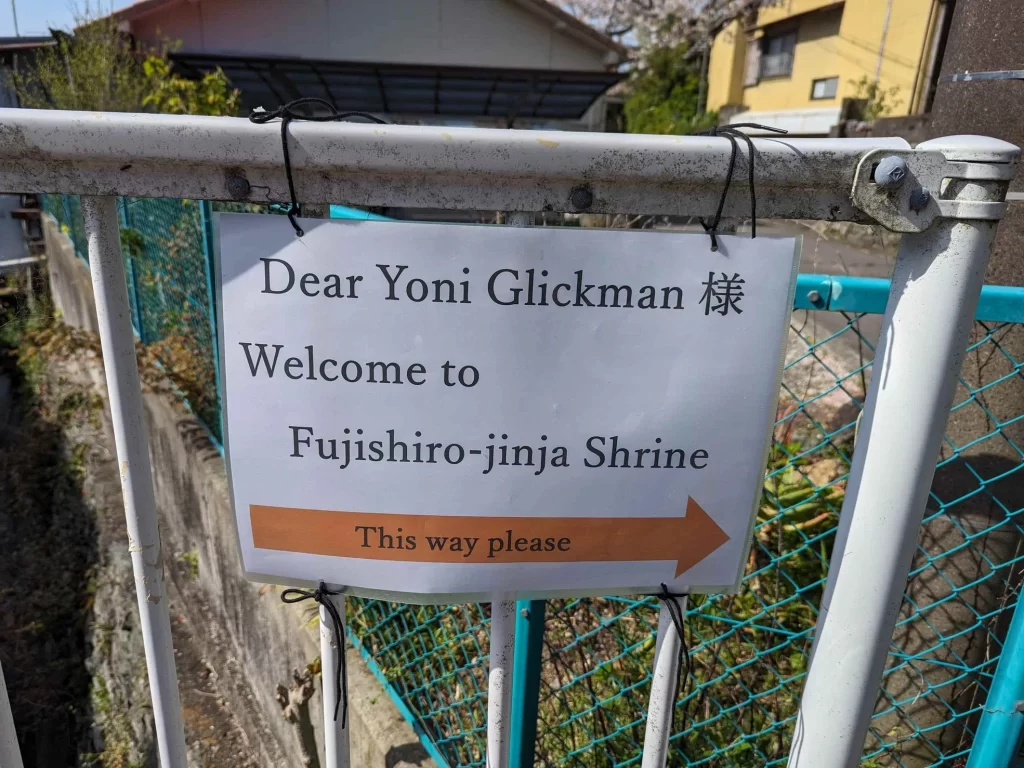
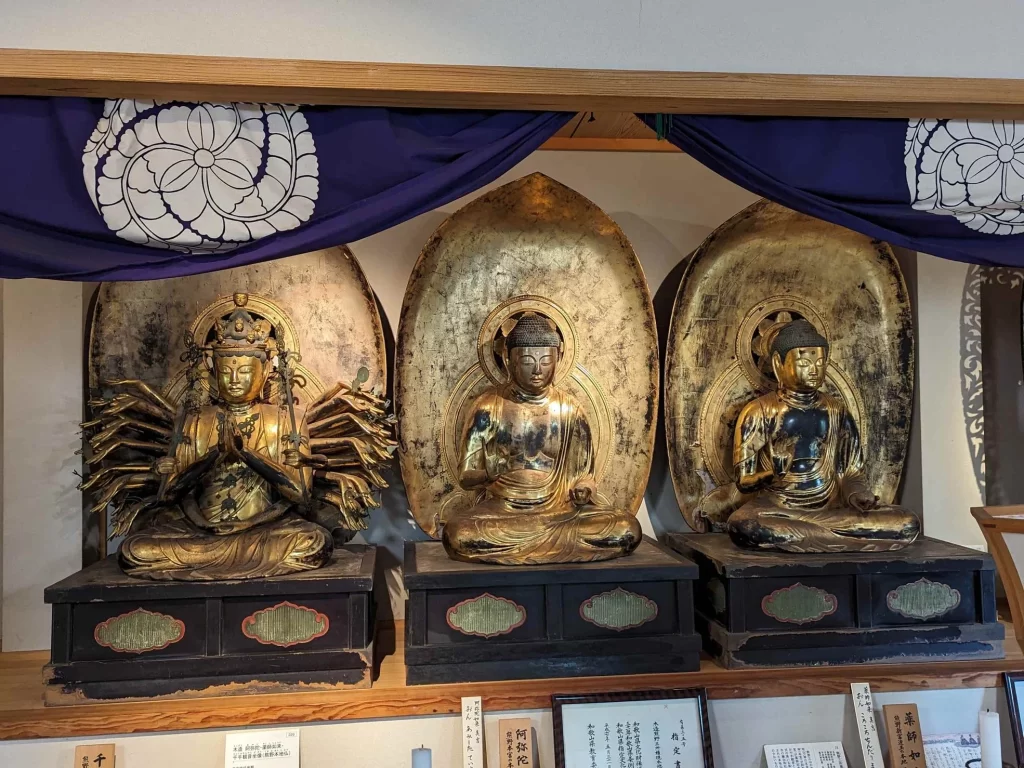
Yuasa
By the time we arrived in Yuasa, which is a designated national town of importance and whose old town is carefully preserved, it was late afternoon and everything was closed. The old town itself didn’t seem nearly as charming as what the guide books made it out to be and the soy sauce museum was suitably dinky. Maybe if we’d arrived a couple of hours earlier we could have experienced Yuasa in all its soy sauce glory. We’ll never know.
A different glory however, awaited us in Yuasa, in the form of our ryokan (local guest house). Run by a husband and wife team, where the wife is the hostess and husband the chef, there are only 6 rooms, each one set out in classical Japanese fashion and facing their beautifully manicured garden. After a long relaxing hot bath, that has its own rituals about cleansing oneself before entering (The Japanese are very big on cleanliness, rituals and social mores) we had our first experience wearing a yukata, the Japanese robe that you wear around the house instead of your dirty clothing. As everything in Japan, there is a custom about how to fold the flaps, left over right. If one was to fold one’s yukata right over left, this would be a most serious faux pas. We very quickly learnt to love the yukata, and the immediate cleansing and hot bathing before donning the gown upon arrival at all of our accommodations whilst we were on shvil. We were expected to eat our meals, dinner and breakfast the next day, in our yukata. We were happy to oblige.
Normally I would finish describing our day at this point, but to not mention dinner would be to miss the highlight of a day brimming full of highlights. I am certain it took our chef all day to prepare the 15 portions that were presented to us, each one exquisitely set out on a plate or bowl, like works of art. We had no idea where to start, if there was meant to be a specific order that we were expected to eat or for that matter, what we were about to eat. As Yoni said, “I have never felt more ignorant in my entire life.” I can’t describe everything, but we were treated to an entire range of fish and seafood, seaweed, vegetables and tofu, each prepared by a different method -raw, fried, poached, steamed, pickled, cured. The food was washed down with copious amounts of locally produced saki. We have all travelled quite extensively and have eaten meals of the highest quality around the world. There was unanimous agreement that this was amongst the top 5 meals we had ever eaten. It was perfect in its preparation, freshness, intricacies and presentation, together with a range of flavours we had never experienced in a single meal.
We retired to our tatami mats after the first day of our walking experience in full knowledge that for all the excitement and anticipation before embarking on this journey, the reality was far exceeding it.
